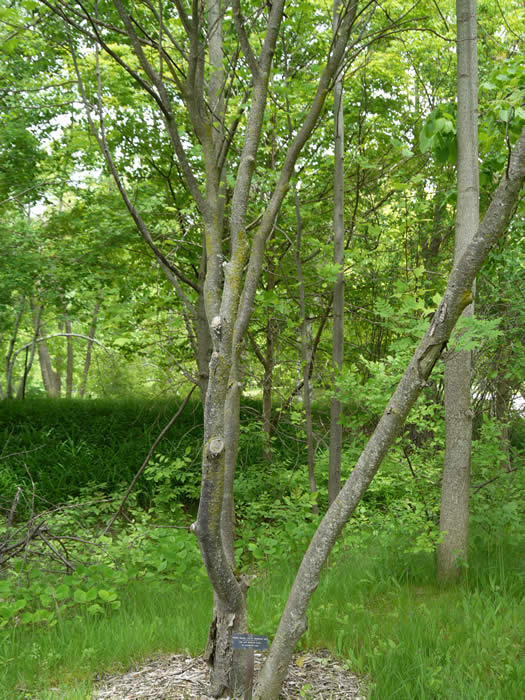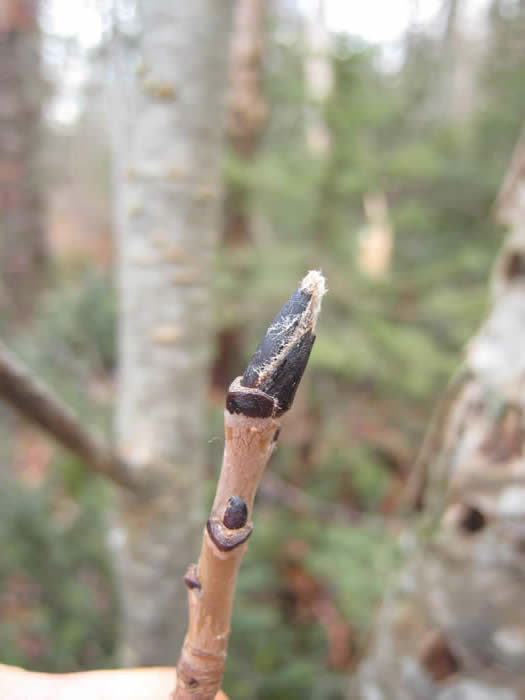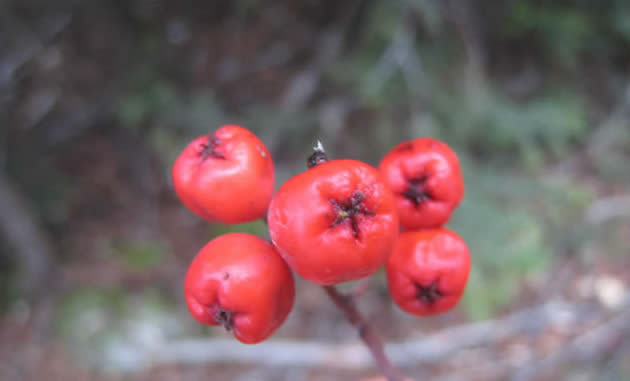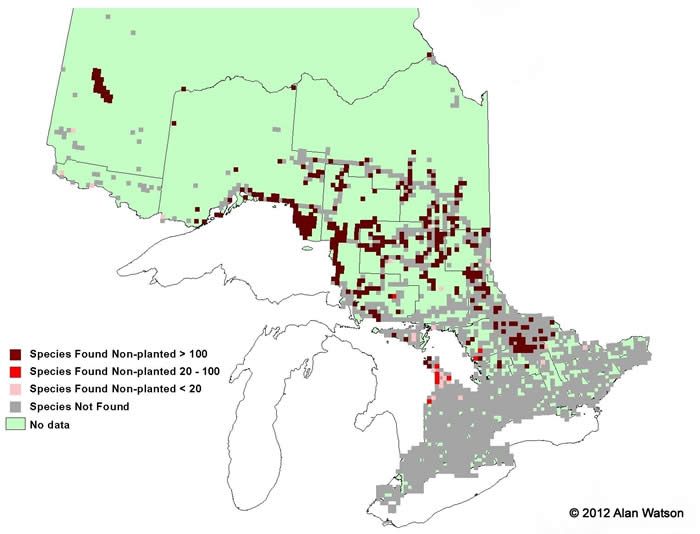Showy Mountain Ash - Sorbus decora
The Showy Mountain Ash is fast growing and often planted as an ornamental due to its lovely flowers and delicious berries. Birds are the main disperser of the seeds of this Ash species. The berries provide essential winter food for many birds and mammals as they persist on the branches above snow during the harsh winter months. It is interesting to note that when both native and introduced mountain ash species are present birds will eat the fruit of the native tree first. Another interesting fact is that when the berries have fermented, groups of drunken birds have been reported.

The Showy Mountain Ash is a small tree, goruwing up to 15 m high and 25 cm in diameter. The trunk is straight and branch free. Photo by Jesse Wolf.

Leaves of the Showy Mountain Ash are about 20 cm long numbering from 13-17 per leaflet. They are also finely toothed and slightly hairy when young. Photo by Jesse Wolf.

The terminal buds are cone shaped and measure 10-14 mm long. They are reddish-brown and hairy. Photo by Sean Fox.

Bark of the Showy Mountain Ash is can be greyish-green or golden-brown and becomes scaly with age. Photo by Sean Fox.

These 8-10 mm berries are shiny red and appear in rounded clusters with many fruits in each. They become mature in late summer and persist through winter. Photo by Sean Fox.

Ontario Tree Atlas map of non-planted Showy Mountain Ash. 1995-1999.
References
Farrar, J.L.. 1995. Trees in Canada. Fitzhenry & Whiteside Ltd. Toronto. ON. 504 pp.
Kershaw, L. 2001. Trees in Ontario: Including tall shrubs. Lone Pine Publishing. Edmonton. AB. 240 pp
Muma, W. 2011. Ontario Trees and Shrubs. [Online] Available: www.ontariotrees.com
OMNR, 2011. Ontario Ministry of Natural Resources: Ontario Tree Atlas. [Online] Available: http://www.mnr.gov.on.ca/en/Business/ClimateChange/2ColumnSubPage/267027.html
OMNR, 2008. Ontario’s Biodiversity: Species at Risk.